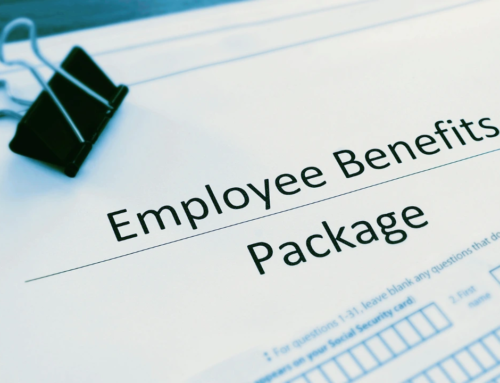You just finished making yourself some coffee and are walking over to your desk when you suddenly hear a commotion. You and your colleague give each other puzzled looks and go find out what all the ruckus is about. You stare in disbelief at an enraged co-worker being dragged away by security!
Nobody wants to see that happen. After all, work is supposed to be a safe space where everyone is expected to behave professionally even when tempers run high. However, pent-up frustrations, anxiety, and feelings of neglect may lead to a ticking time bomb that could explode in ugly instances of violent behavior. What’s alarming is that they’re more common than you’d think — nearly 48% of HR professionals say that their organization has suffered from workplace violence at some point.
Don’t let that happen to you. One of the first steps to prevent it from happening is proactively identifying the indicators of potential workplace violence.
The early-warning signs of workplace violence vary from person to person. Knowing exactly what signs to look out for reduces the risk of an unfortunate event that could threaten the safety of you and your employees.
The Obvious Indicators of Potential Workplace Violence
Some signs of impending workplace violence are easy to identify. Take immediate action if a co-worker displays any of the following behaviors:
1. Direct or Veiled Threats of Violence
A co-worker threatening another person with either physical or psychological harm is a classic sign of potential violence. The threats may be direct. They can also be veiled or indirect — such as an employee “joking” about doing something violent.
In any case, an employee making threats — direct or otherwise — must not be ignored. A manager or someone from the human resources department should intervene to avoid escalation and take action based on the severity of the threat.
2. Visible Outrage
It’s completely normal for an employee to get mildly upset at work once in a while. However, it’s concerning if they become so enraged that it begins to affect others. A raised voice, flushed cheeks, rapid breathing, sweating, and a clenched jaw are all signs of anger that could lead to violence. These signs may also be accompanied by hitting or smashing inanimate objects.
Someone from HR or the employer should speak to the employee if their aggressive behavior is making their co-workers feel threatened and ask what made them snap. Maybe they are a victim of workplace bullying or harassment, and anger is their way of coping. Encourage them to take some days off, if possible, to simmer down. An HR professional might also be able to help the employee by sharing alternative coping mechanisms and resources.
3. Crying
A meltdown can manifest itself in different ways. Crying is one of them. It’s an early warning sign that the person is feeling overwhelmed with emotions and could very well resort to violence, depending on what upset them.
Speak to the upset employee and ask what triggered them. Maybe it’s performance-related. Or maybe they were harassed or threatened by a co-worker, which warrants a serious investigation and potential disciplinary action. Or perhaps it’s not related to work at all. Whatever the case, the employer should always make the first move and invite the employee to share their feelings. Not only will the employee appreciate that, but it can also help mitigate the risk of potential violence.
4. Repeatedly Violating Company Policies
Many offices have a maverick — a person who doesn’t shy away from breaking small, harmless company policies once in a while. Their actions don’t affect others, and their colleagues usually give them a pass because they’re generally very nice and good at what they do. However, a colleague who starts to repeatedly violate company policies out of the blue — such as showing up late to work — is a red flag, especially if they were a model employee. They could be doing it to provoke a colleague or a supervisor into giving them a reason to cause them harm.
The best way to handle a non-conformist is to first make sure they actually know the policies. Perhaps they genuinely forgot about the policies or didn’t get the memo about a change in rules. However, consider it a red flag if they repeat the offense after that first conversation. At this point, you can give them a warning or take more strict action if necessary.
The Subtle Indicators of Potential Workplace Violence
Some indicators that an employee is about to snap are easier to mask and, therefore, difficult to flag until it’s too late. Keep an eye out for the following behavior:
5. Increased Absenteeism of Co-Workers
Employees who are victims of a hostile work environment are the ones who usually find an excuse to skip work. It may be their way of avoiding certain peers or supervisors who bully and/or harass them.
A manager or the employer themselves should meet with the employees who are often absent to find out what’s really causing them not to clock in. Maybe they feel disengaged and unmotivated to come to work, which is a whole different conversation. But if they feel threatened by a co-worker, take the necessary steps to create a safe environment for everyone.
6. Making Unusual Sarcastic Remarks
Friendly banter between co-workers is normal. In fact, it’s a sign of strong workplace culture and camaraderie when done within limits. But it could escalate to a serious argument or even physical assault if left unchecked. Therefore, keep an eye out for any employee making snarky remarks during the workday. They could be trying to pick a fight.
Other employees may see their snide comments as bullying, especially if they’re new. Supervisors should have firm discussions with anyone who crosses the line with their remarks, tell them to stop, and take action if needed.
7. Exhibiting an Overly Laid Back Attitude
Has a co-worker recently stopped caring about their performance or how they look? Declining job performance and showing up a mess could indicate that the employee is dealing with something in their life. However, it may also be an indicator of potential workplace violence waiting to happen.
The employer or an HR manager should invite the employee for a heart-to-heart and ask them why they’re acting this way. Maybe they’re dealing with personal problems, such as domestic violence, which your employee assistance program (EAP) should help them with. This will help cultivate loyalty and possibly avoid an incident of workplace violence.
8. Sharing Strange or Inappropriate Content
Receiving strange, ominous messages, pictures, or videos from a co-worker should certainly raise some alarms — for example, a video that glorifies weapons or the use of physical assault at a professional workspace or a seemingly harmless meme that jokes about harming a co-worker.
If a co-worker shares similar content suggesting violence, whether through email, group chat, or in real life, then tell them to stop. If they continue despite your intervention, get HR involved so appropriate action can be taken.
Mitigate the Risk of Workplace Violence Before It’s Too Late
Identifying the signs of potential violence in the workplace is just half the process. The other half is taking appropriate measures to proactively prevent violence. And while talking to the potential violators is a huge step, there’s more to it than that.
Offer Violence Prevention Training
Your violence prevention training plan must train all employees on how to deal with their emotions, identify signs of a disgruntled co-worker, and protect themselves in violent situations. This helps in two ways. First and foremost, it reduces the risk of a violent act happening in the workplace because it trains people on how to practice restraint and deal with difficult situations. Second, it keeps your business compliant with safety laws and protects you against potential lawsuits. For example, all healthcare employers in California are required to offer a violence prevention plan and training per the state’s Workplace Violence Prevention in Health Care standard.
Consider getting help from a security management firm to create a formalized program, such as ASIS International.
Support Employees in Reporting Any Signs
Implement the “If You See Something, Say Something” rule, and encourage all employees to follow it. Essentially, an employee should report immediately to a supervisor or HR if they notice a co-worker or a customer exhibiting early warning signs of potential violence.
Create a system that allows employees to anonymously follow this rule, such as through an anonymous online form that’s easily accessible to everyone. That way, they’ll feel comfortable coming forward with their concerns, and timely action can be taken to mitigate the risk.
Encourage Mental Health Days
Sometimes, all that a disgruntled employee needs is a day or two to relax and clear their mind. Start by recognizing mental health issues as valid reasons to request paid time off if you haven’t already. Then, create a system that makes it easy for employees to request mental health days and encourage managers to also use this perk themselves and lead by example.
Act Before They Do!
Proactive initiatives are far better than reactive measures when it comes to preventing workplace violence. While the risk is never zero, offering continuous training, creating a safe workplace, and prioritizing the mental health of your employees will certainly go a long way.
Need help with the administrative aspects of creating a workplace violence prevention program? Consider Inova’s HR outsourcing service to help lighten the load on your team.




